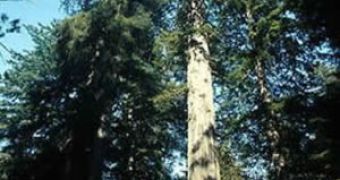Sequoia (redwoods) are the largest trees in the world and at the same time amongst the most long-lived ones, having a long lifespan (of millennia).
A specimen of coast redwood tree (Sequoia sempervirens) found in 2006 in a remote forest in Redwood National Park (Northern California) proved to be the world's tallest tree. Called Hyperion, the tree was 379.1 ft (126.4 m) tall. Such giants survive today only in National Parks, otherwise they are cut by loggers.
"What we have today is a few small remnants that suggest what these trees are capable of doing," said Professor Steve Sillet from Humboldt State University.
Redwoods grow in a delicate ecosystem of mild, foggy slopes, in a narrow strip of land, approximately 750 km in length and 8-75 km width along the Pacific coast in western US, with an elevation range of 30-750 m.
Now, the arborist David Milarch started a project of preserving and restoring Northern California's colossal redwoods and he hopes that cuttings could be employed for making genetic clones of the trees.
Milarch has already formed a team of crack tree climbers who by ropes and harnesses clamber over 100 ft (33 ft) into the treetops at Roy's Redwoods Preserve, Marin County, approximately 25 mi (40 km) north of San Francisco. The climbers clipped boughs from some of the area's oldest and tallest trees to preserve genetically pure samples.
"Protecting the habitat of the species in place - I think that's the most important approach to conservation," said Deborah Rogers, a redwood geneticist and director of conservation science for the San Diego County-based Center for Natural Lands Management.
"A genetic storehouse that could protect the entire species from an unforeseen cataclysm caused by climate change or an imported disease would require samples from hundreds of trees across the state." said Rogers.
Milarch wants to use the samples taken from about 20 ancient redwood locations in five different zones which will be enough to start his restoration project. His next step is to ask from landowners and communities for plots larger than five acres to plant the clones that in the best case should interbreed.

 14 DAY TRIAL //
14 DAY TRIAL //